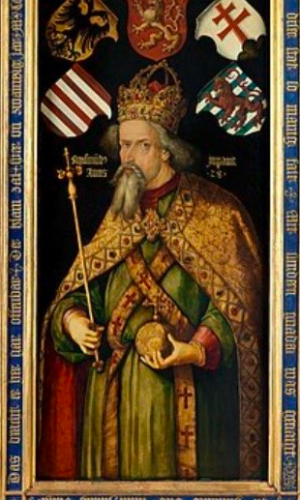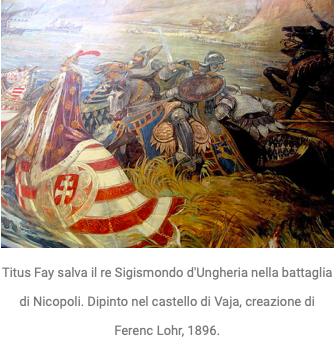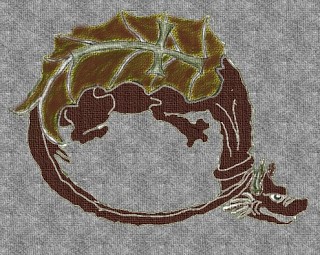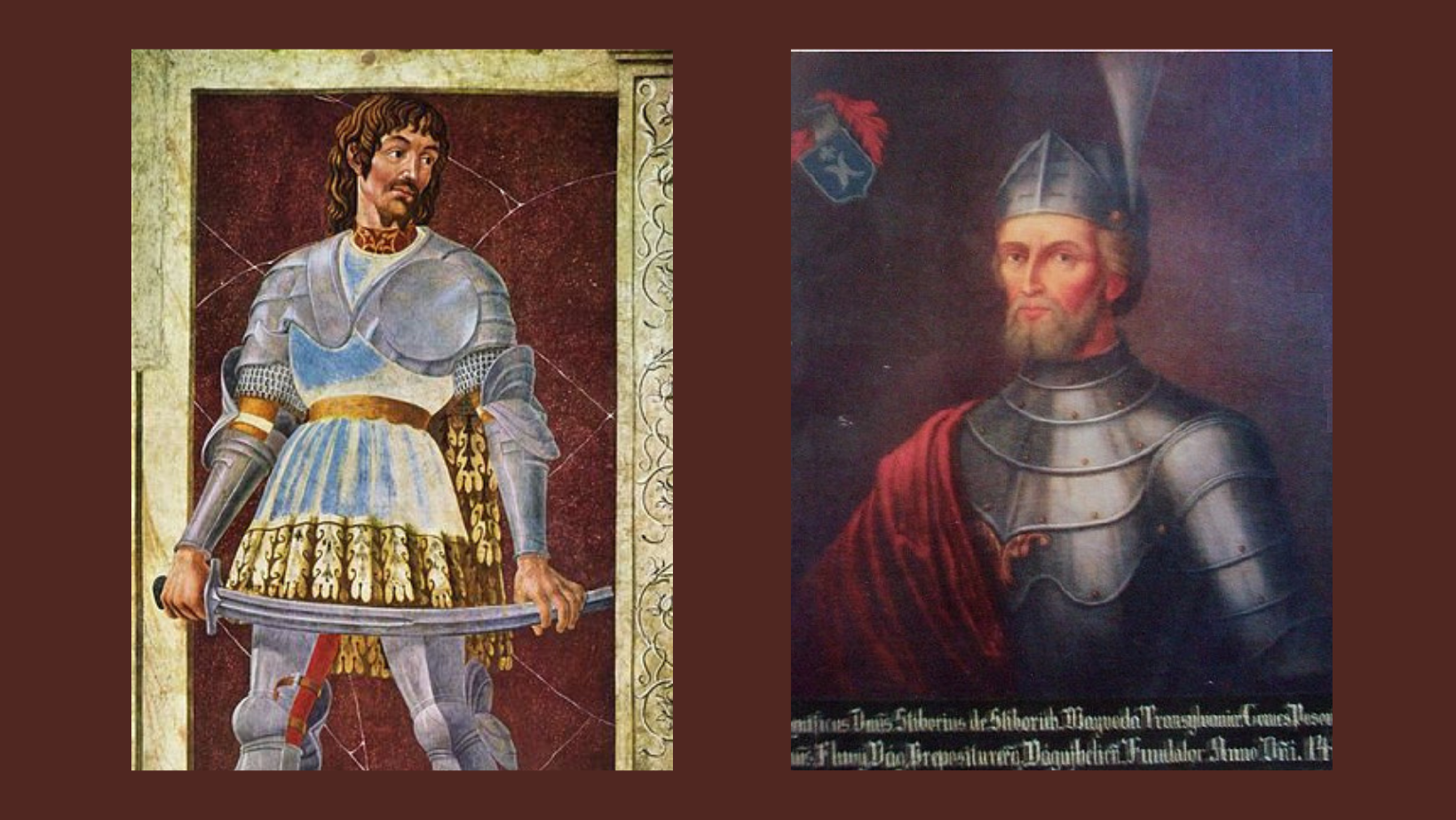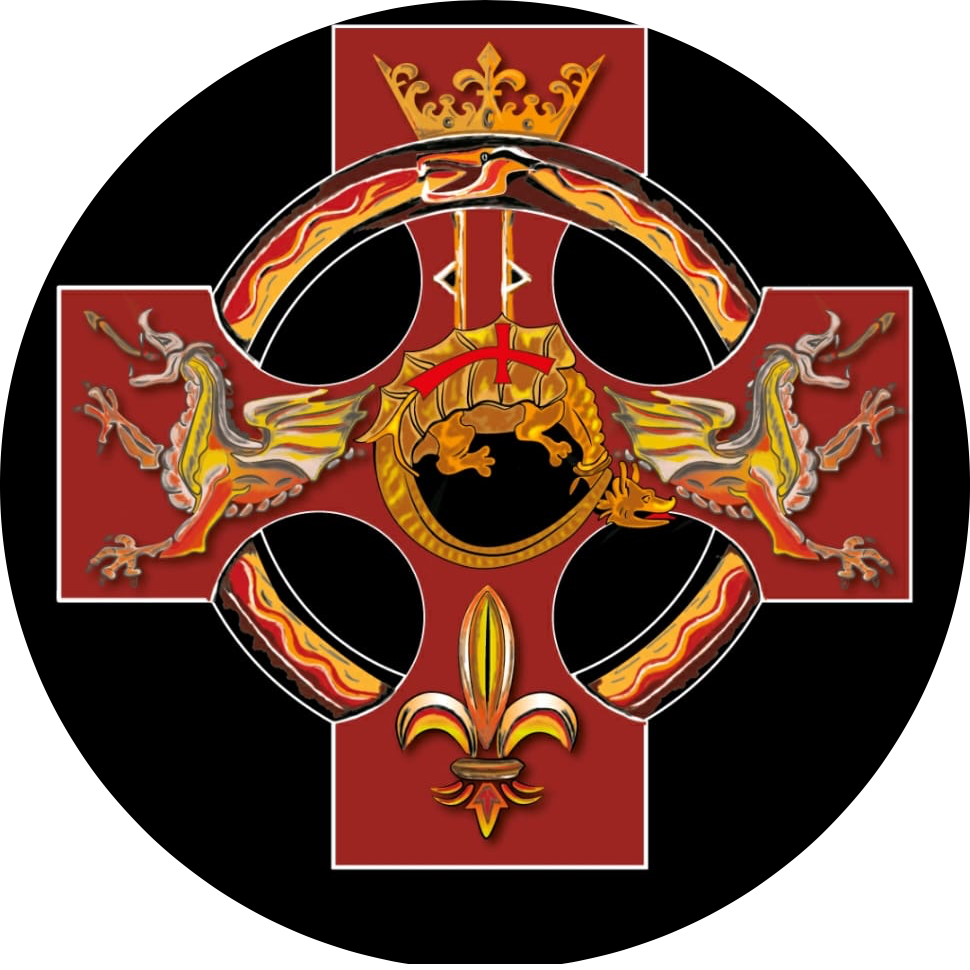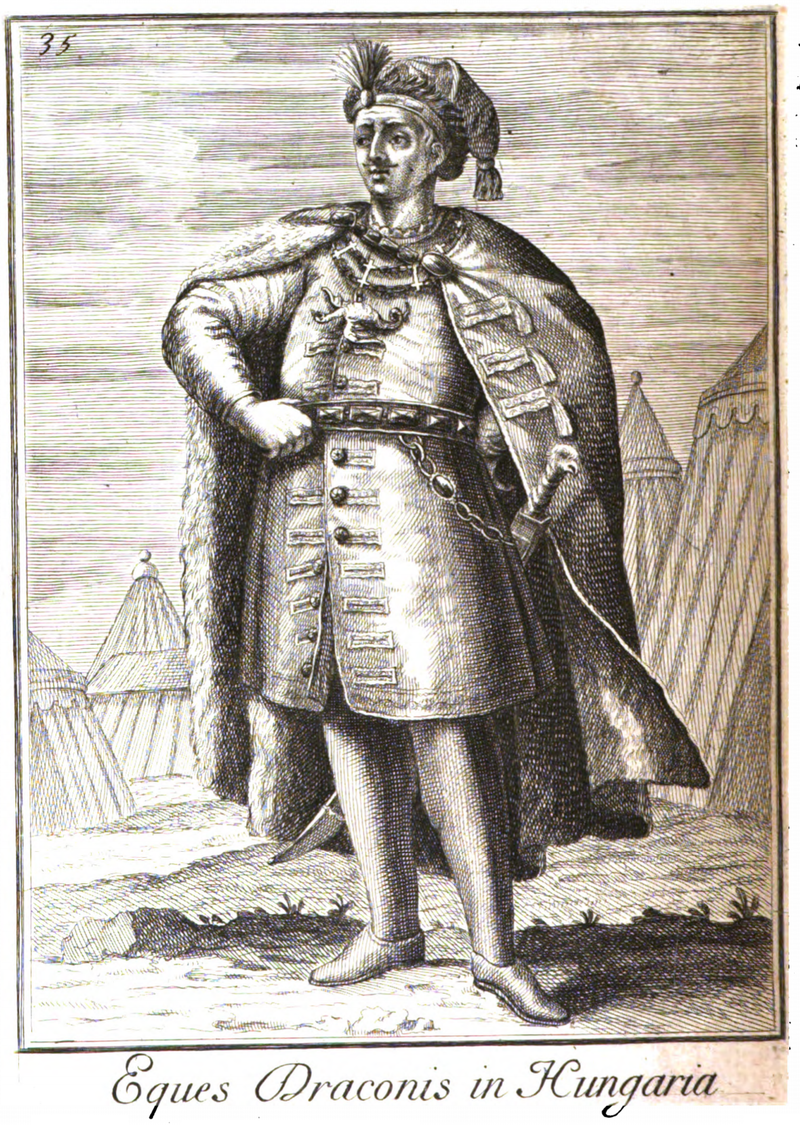The Order of the Dragon adopted as its effigy the agonising Dragon upside down on itself with a cross in the middle. It wished to indicate the victory of Catholic orthodoxy over heresy and evil and the defeat of the infidels and heretics that was to take place shortly thereafter. Its members wore the emblem around their necks in the form of a pendant and wore on their armour a long scarlet tunic and a green cloak (symbolising the skin of the Dragon and its bloody belly) fastened by a buckle. The Order’s authentic insignia are now on display in the Ehemals Staatiche Museum in Berlin and the Bayeriches Nationalmuseum in Munich.
The German name for this order was ‘Drachenordens’ and in Latin ‘Societatis draconistrarum or draconistarum’.
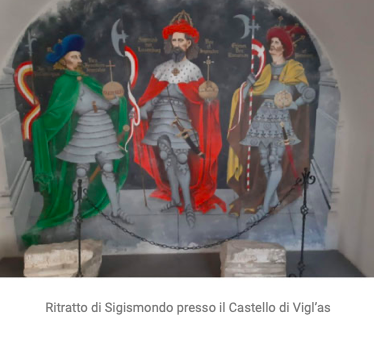
Its deeds, written in Latin, call it a society (societas), whose members bear the signum draconis, but do not give it any official name. Contemporary documents, however, refer to the order by a variety of similar though unofficial names, such as Gesellschaft mit dem Drachen, Divisa seu Societas Draconica, Societas Draconica seu Draconistarum and Fraternitas Draconum or Draconis. The Order was, to a certain extent, modelled on the previous Hungarian monarchical order, the Order of St. George.
The Order of the Dragon, which some confuse with a simple decoration, was indeed an institution, just like the other orders of knighthood that arose in medieval times. The creation of the order was an example within a broader fashion of founding knightly orders during the 14th and early 15th centuries, not infrequently devoted to organising ‘crusades’, especially after the disaster of the Battle of Nicopolis (1396). Sigismund’s order was particularly inspired by the Order of St. George of 1318 (Societas militae Sancti Georgii), founded by King Charles I of Hungary in 1318, the grandfather of Sigismund’s first wife, Maria.
Another influential model may have been the Sicilian Order of the Ship, founded in 1381.
The order spread rapidly in Eastern Europe, especially in Bohemia, Hungary, Poland and the Danubian Principalities (present-day Romania). It later spread to Germany, Austria, Italy and Spain. Kings, barons, priests and kingdom leaders gathered under the sign of the Dragon under the Cross and proclaimed their loyalty to King Sigismund and his Queen. However, it must be borne in mind that Sigismund’s entire commitment to the Church was mainly aimed at his desire to be crowned Emperor, which he did on 31 May 1433 by Pope Eugene IV, who ratified the statute of the ‘Dragons’ on this occasion.
The statute of the Order, which was enlarged by Bishop Eberhard of Nagyvárad, chancellor at Sigismund’s court, survives only in a copy made in 1707, which was published in an edition of the Codex Diplomaticus Hungariae di Ecclesiastico ac civilis in 1841, and has remained almost unknown. An analysis of this important document shows that the purpose of the order was to defend the cross, symbolised by the ancient dragons (Draconis tortuosi), through the help of St. George, to defend the Hungarian monarchy from foreign and domestic enemies and the Catholic Church from heretics and pagans, especially those converts to the doctrine of the heretic Jan Hus (Hussites) and those from the Ottoman Empire. Today, the known materials are archived within the University of Budapest.
From the left:
Pippo Spano e Stefan Lazarec


